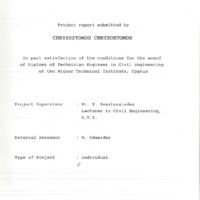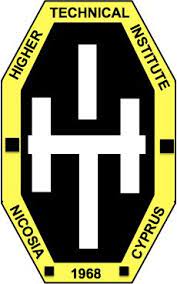Pumping of concrete
- Τίτλος
-
Pumping of concrete
- Θέμα
- Concrete--Pump placing
- Δημιουργός
-
Chrysostomou, Chrysostomos
- Πηγή
- Higher Technical Institute
- Το πλήρες κείμενο είναι διαθέσιμο από το Υπουργείο Ενέργειας, Εμπορίου Βιομηχανίας και Τουρισμού
- Εκδότης
- Library of Cyprus University of Technology
- Ημερομηνία
- 1989
- Συνεισφέρων
- Anastassiades, K.
- Adamides, M.
- Δικαιώματα
- Απαγορεύεται η δημοσίευση ή αναπαραγωγή, ηλεκτρονική ή άλλη χωρίς τη γραπτή συγκατάθεση του δημιουργού και κάτοχου των πνευματικών δικαιωμάτων.
- Μορφή
- Γλώσσα
- eng
- Τύπος
- text
- Αναγνωριστικό
-
CED 0027
- Σύνοψη
-
This project deals with a special part of concrete technology, which is the pumping of concrete. Its purpose is to enable the reader to get familiarized with as many aspects of this topic as possible. Chapters 1 and 2, which are general/especially chapter 1, serve as an introduction to the main content of the project so that reader will have a general idea of what is going to read. The rest deals with particular topics concerning the pumping of concrete, such as mechanical equipment, applications, principles of pumpable concrete, other features and problems and finally operating costs.
Going through the project, it can be seen that the advantage of pumping is the ability to move concrete both vertically and horizontally at the same time. Pumps can transport concrete more than 60m vertically or 300m horizontally and can discharge 30m3 to 100m^ per hour. There are two types of concrete pumps: piston and peristaltic. The most common in use are the mechanically or hydraulically driven piston pumps.
Nowadays, pumping o concrete finds many applications, It can be used for foundations, basements, slabs, suspended floors and beams, walls and columns, etc. As a conclusion, concrete for pumping has first to meet the requirements of the specification but it also has to be pumpable. The pumping mix must not tend to segregate or bleed and needs to have a low frictional resistance to enable it to be pushed along the pipeline.
This can generally be obtained by having.
(a)a target slump of 75mm
(b)a cement content of at least 280 kg/m3 to ensure complete filling of the voids in the combined aggregates
(c)a uniform aggregate grading with no gaps and a minimum of voids
(d)a slightly increased sand content over that normally used-an additional 50 to 75 kg/m3
Aggregates to avoid are flaky or crushed materials.
- Πολυμέσα
-
 CED 0027.pdf
CED 0027.pdf
Τμήμα του Pumping of concrete


